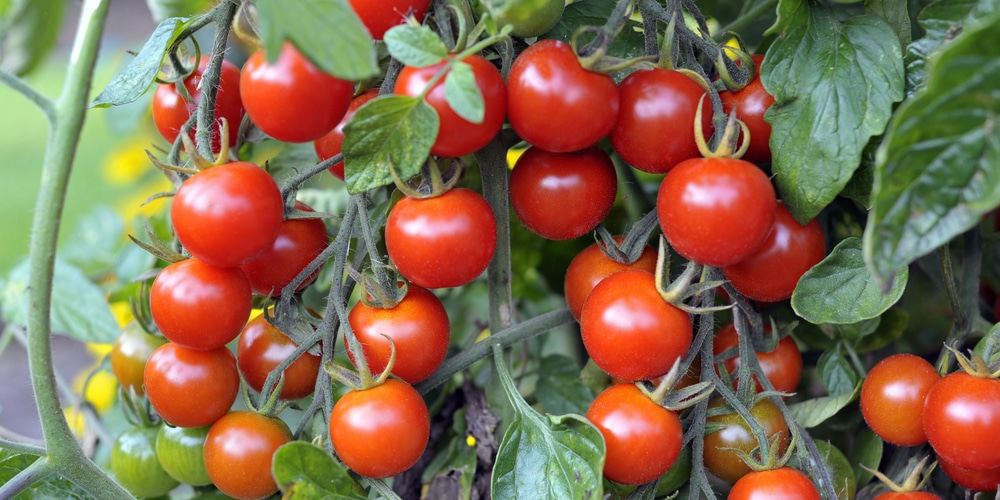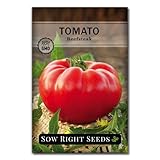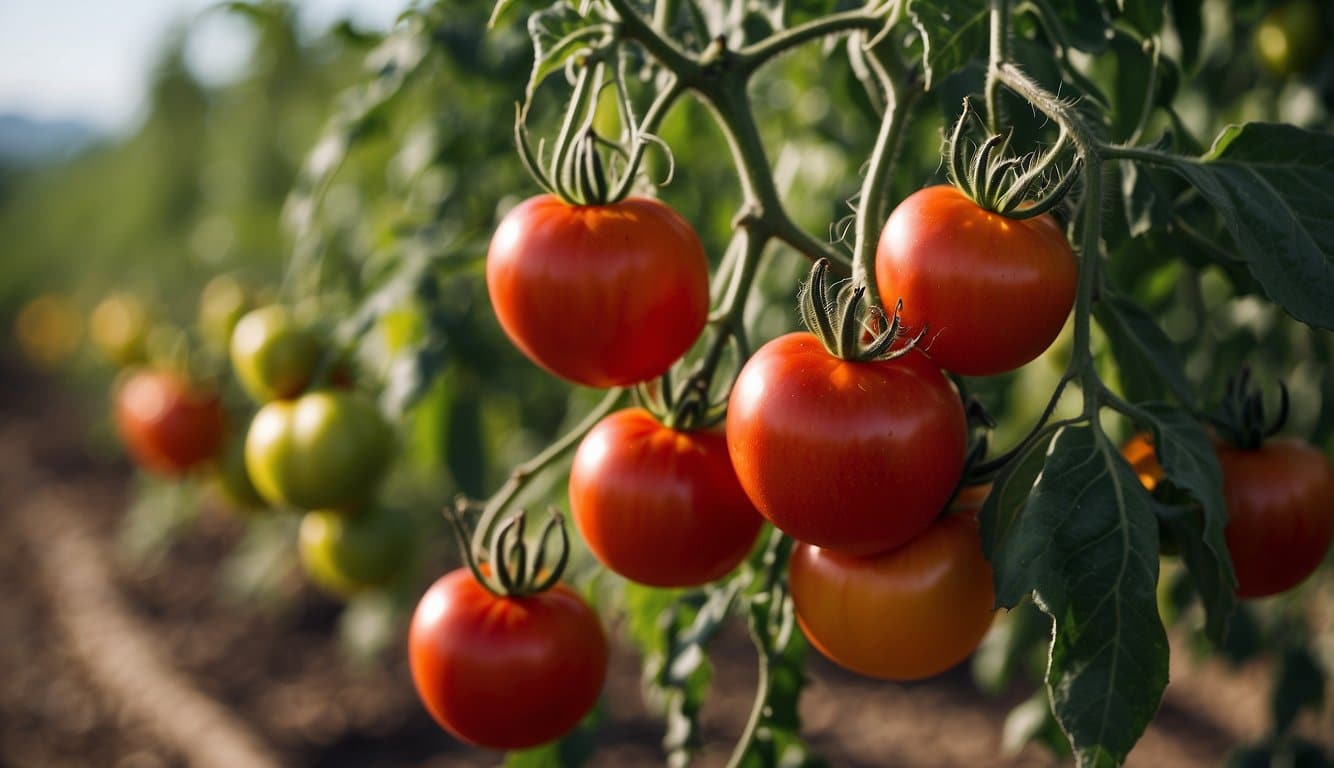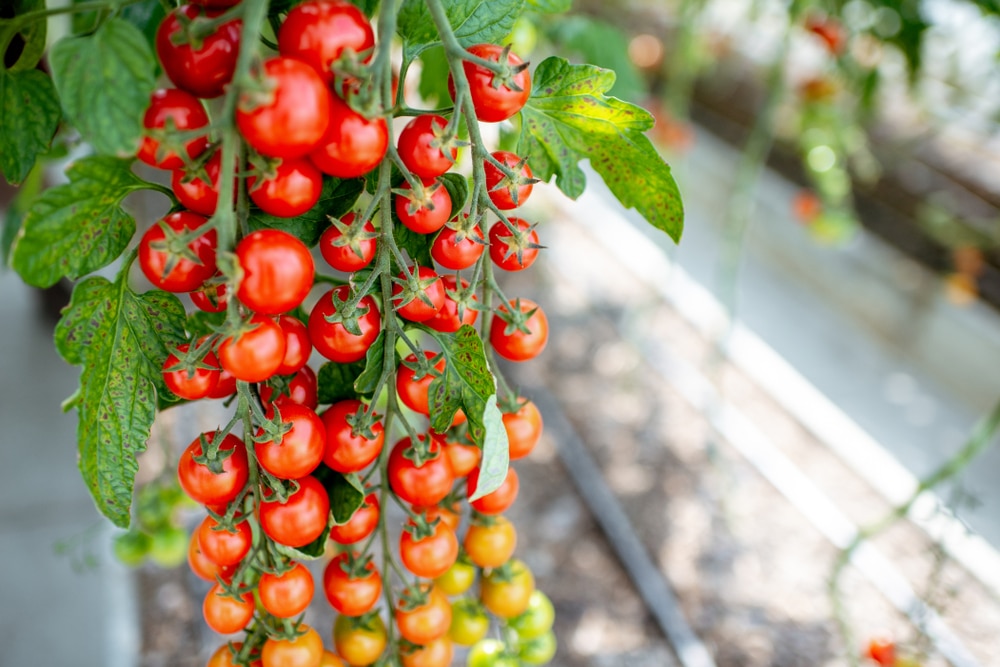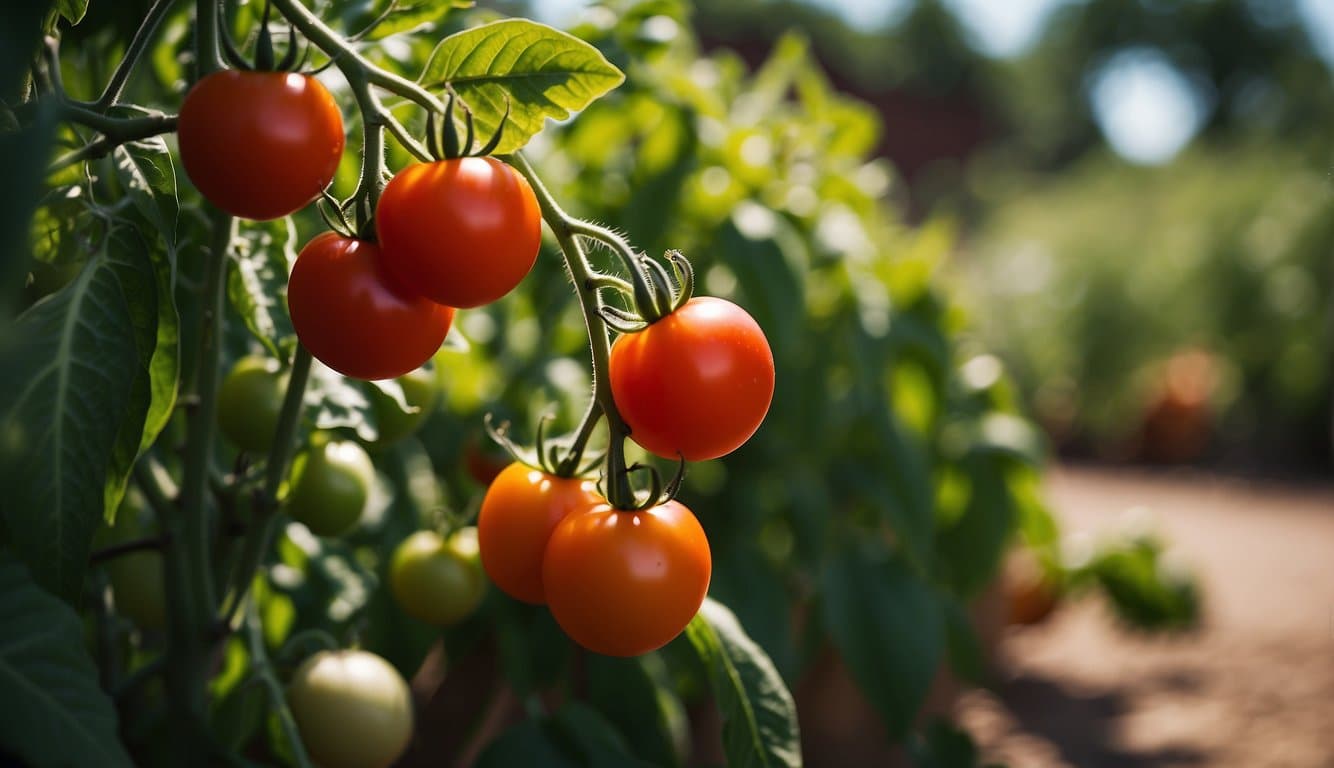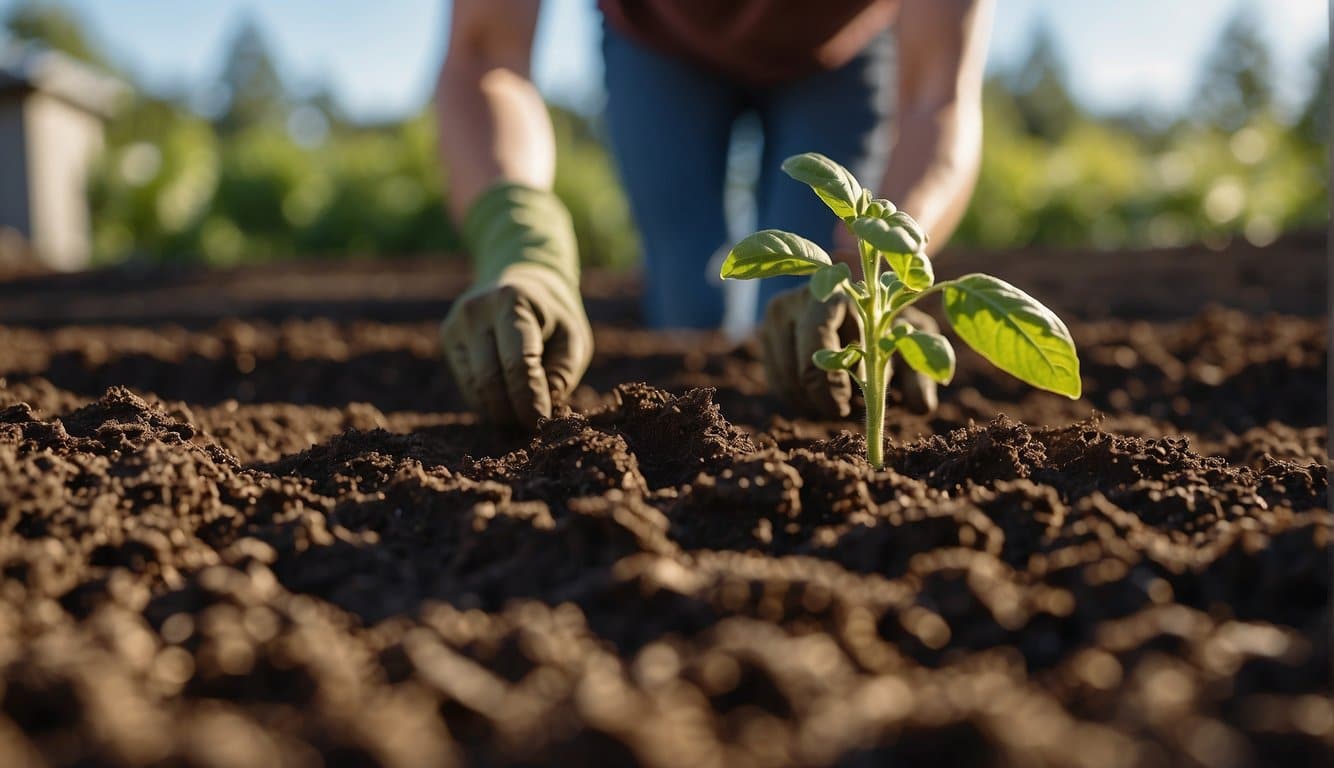| Question | What’s the best time of year to plant tomatoes in Colorado? |
|---|---|
| Answer | After the last frost date, typically mid-May to early June. |
| More Info |
|
In Colorado, the planting time for tomatoes is influenced by the state’s varied elevations and climate zones. Generally, the safe period to plant tomatoes outdoors is after the last frost date, which can range from mid-May to early June in many parts of Colorado.
Given the potential for late spring frosts, especially in higher elevations, it’s prudent to wait until you’re confident the frost risk has passed. Starting tomato seeds indoors about 6-8 weeks before the expected transplanting date is a good strategy to get a head start on the growing season.
For a fall crop, timing is more constrained due to Colorado’s early frosts, making early planting essential.
Climate Zones Play an Impact on WHEN You Can Put the Tomatoes Out
In Colorado, understanding climate zones is critical for determining the optimal planting time for tomatoes.
Colorado’s varied topography influences its climate zones, ranging from USDA Hardiness Zones 3 to 7. These zones reflect the average minimum winter temperatures and play a pivotal role in when gardeners should transition tomatoes from indoors to the garden.
Zone 3 & 4— High altitude areas and colder parts of the state:
- Start seeds indoors: March
- Transplant outdoors: After June 1st
Zone 5—Including cities like Colorado Springs:
- Start seeds indoors: Late February to March
- Transplant outdoors: After May 15th
Zone 6—Lower elevations, areas with milder winters:
- Start seeds indoors: February
- Transplant outdoors: After mid-May
For each of these zones, it is essential to monitor local frost dates.
Tomatoes are vulnerable to frost, and the last spring frost date is a key indicator for when it is safe to move tomatoes outside.
In colder zones, gardeners often use techniques such as cold frames or cloches to protect young tomato plants from late frosts.
Gardeners should also consider the daytime temperatures.
Tomatoes thrive when daytime temperatures are consistently between 70°F and 85°F.
Therefore, even after the danger of frost has passed, it’s important to wait until the temperatures have warmed sufficiently.
Ideal Planting Times for Tomatoes in Colorado
Tomato growers in Colorado need to strategically time their planting to navigate the short growing season and unpredictable weather. Adhering to local frost dates is crucial for a successful harvest.
Spring Frost Dates
Gardeners should begin by identifying the last average spring frost date in their area.
This date serves as a guideline for when to start seeds indoors and when to transition plants outdoors.
Colorado’s diverse climate means the last frost can occur from late April to early May in warmer areas, to as late as June in cooler mountain regions.
Specifically, starting tomato seeds indoors is recommended 60 days prior to this last frost date.
For example, if the anticipated last frost is May 15, tomato seeds should be sowed around March 17.
- Denver area: Last spring frost typically occurs around May 5.
- Colorado Springs: Anticipate the last frost near May 15.
- Mountain regions: Expect a safer date closer to June 15.
Fall Frost Dates
Tomatoes need sufficient time to mature before the first fall frost date, which signals the end of the growing season.
The average first fall frost date in Colorado can range from early September in the more elevated, cooler areas, to as late as October in the lower, warmer regions.
Planning the transplant of tomatoes into the garden should ensure at least 60 days of good growing conditions before this frost date occurs, allowing tomatoes to reach maturity.
- Lower elevations: First fall frost can be expected around October 10.
- Higher elevations: Planning should account for an earlier fall frost around September 10.
Choosing the Right Tomato Varieties
In Colorado, selecting tomato varieties that can thrive in a shorter growing season is crucial for a successful harvest.
Determining the Best Varieties for Your Area
In Colorado’s unique climate, gardeners should look for short-season tomato varieties that can mature within 50 to 70 days. These types are more likely to produce fruit before the early frost arrives in the fall. Here is a list of suitable varieties:
- Early Girl: Known for its speedy fruit production, apt for the shorter Colorado growing season.
- Celebrity: A disease-resistant variety that offers a high yield of medium-sized, flavorful tomatoes.
- Sun Gold: A cherry tomato variety, treasured for its sweet, tropical-tasting fruit.
Hybrid vs. Heirloom Tomatoes
When considering which tomatoes to plant, one should understand the difference between hybrid and heirloom varieties.
- Hybrid Tomatoes: These are cultivated by crossing two different varieties, resulting in a plant that often has improved disease resistance and greater yield.Bush 506 is an example of a hybrid suitable for Colorado with its compact growth and early maturation.
- Heirloom Tomatoes: These are open-pollinated varieties that haven’t been genetically modified, appreciated for their unique flavors.Their susceptibility to diseases might be higher compared to hybrids, and they may require more care. However, many heirloom varieties that mature quickly can also be suitable for Colorado’s short growing season.
Soil Preparation and Tomato Plant Care
Successful tomato cultivation in Colorado requires meticulous soil preparation and consistent plant care, which sets the foundation for a healthy, productive garden.
Soil Nutrients and pH Level
Tomatoes thrive in soil that is rich in nutrients and has a pH level between 6.2 and 6.8.
Gardeners should conduct a soil test to determine the nutrient content and pH of their garden soil.
If the soil is too alkaline (pH over 7.0), sulfur can be added to lower it. Conversely, if the soil is too acidic (pH below 6.0), lime should be added to raise the pH to optimal levels.
A well-balanced blend of compost and fertilizers can help to enrich the soil before planting.
- Key nutrients for tomatoes include:
| Soil Condition | Amendment |
|---|---|
| High pH (alkaline) | Add Sulfur |
| Low pH (acidic) | Add Lime |
| Nutrient-poor | Add Compost |
| Low N | Add Fish Emulsion |
| Low P | Add Bone Meal |
| Low K | Add Greensand |
Watering and Support
Tomatoes require consistent watering, especially once the fruit begins to set.
It is vital to water at the base rather than overhead to minimize leaf diseases and to provide the water directly to the roots where it’s needed most.
A good practice is to provide 1-2 inches of water per week, which might increase during the hot summer months or in sandy soils.
Support structures, such as cages or stakes, are also crucial for the growth of tomato plants to keep them off the ground and reduce the risk of disease.
Proper staking or caging helps in maintaining airflow around the plant and facilitating sun exposure, which is essential for fruit ripening.
- Watering Tips:
- Early morning watering is preferred to reduce evaporation.
- Use drip irrigation or soaker hoses to target the root zone and conserve water.
- Mulch can be applied to help retain soil moisture.
- Support Methods:
- Cages provide support and easy access to fruit.
- Stakes are ideal for determinate varieties and small-space gardening.
- Trellises can be used for indeterminate varieties that require more vertical space.
Frequently Asked Questions
To ensure a fruitful harvest, gardeners in Colorado must time the planting of their tomatoes wisely, considering both indoor seedling preparation and outdoor planting schedules.
When is the ideal time of year to start tomato seedlings indoors in Colorado?
Gardeners should start tomato seedlings indoors around March. This gives plants ample time to grow strong enough for outdoor transplanting after the risk of frost has passed.
What is the optimal outdoor planting window for tomatoes in Colorado’s climate?
The optimal time for planting tomatoes outdoors in Colorado is from May 15 to May 30. Planting within this window helps avoid damage from late spring frosts.
What specific tomato varieties are known to thrive in Colorado’s growing conditions?
Tomato varieties like ‘Early Girl’, ‘Celebrity’, and ‘Better Boy’ are known for performing well in Colorado’s varied climate, offering both disease resistance and a reliable yield.
At what soil temperature can tomato plants typically be safely transplanted outdoors in Colorado?
Tomato plants can generally be transplanted outdoors when the soil temperature consistently reaches at least 55°F. Using a soil thermometer can aid gardeners in determining the right time.
How should one adjust the tomato planting schedule when facing a late frost in Colorado?
Should a late frost be forecasted, gardeners may delay transplanting tomatoes outdoors or protect plants with row covers to shield them from frost damage.
Are there any special considerations for growing tomatoes at high altitudes in Colorado?
At high altitudes in Colorado, gardeners may need to select cold-tolerant tomato varieties.
They should also consider using season extension techniques such as cold frames to combat the cooler and shorter growing season.
Last update on 2025-06-06 / Affiliate links / Images from Amazon Product Advertising API
